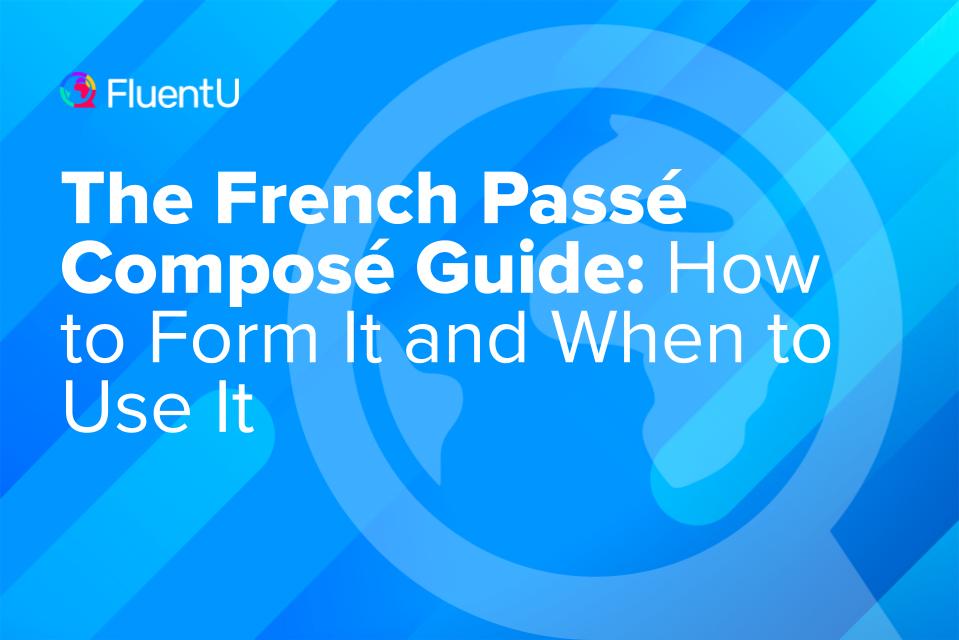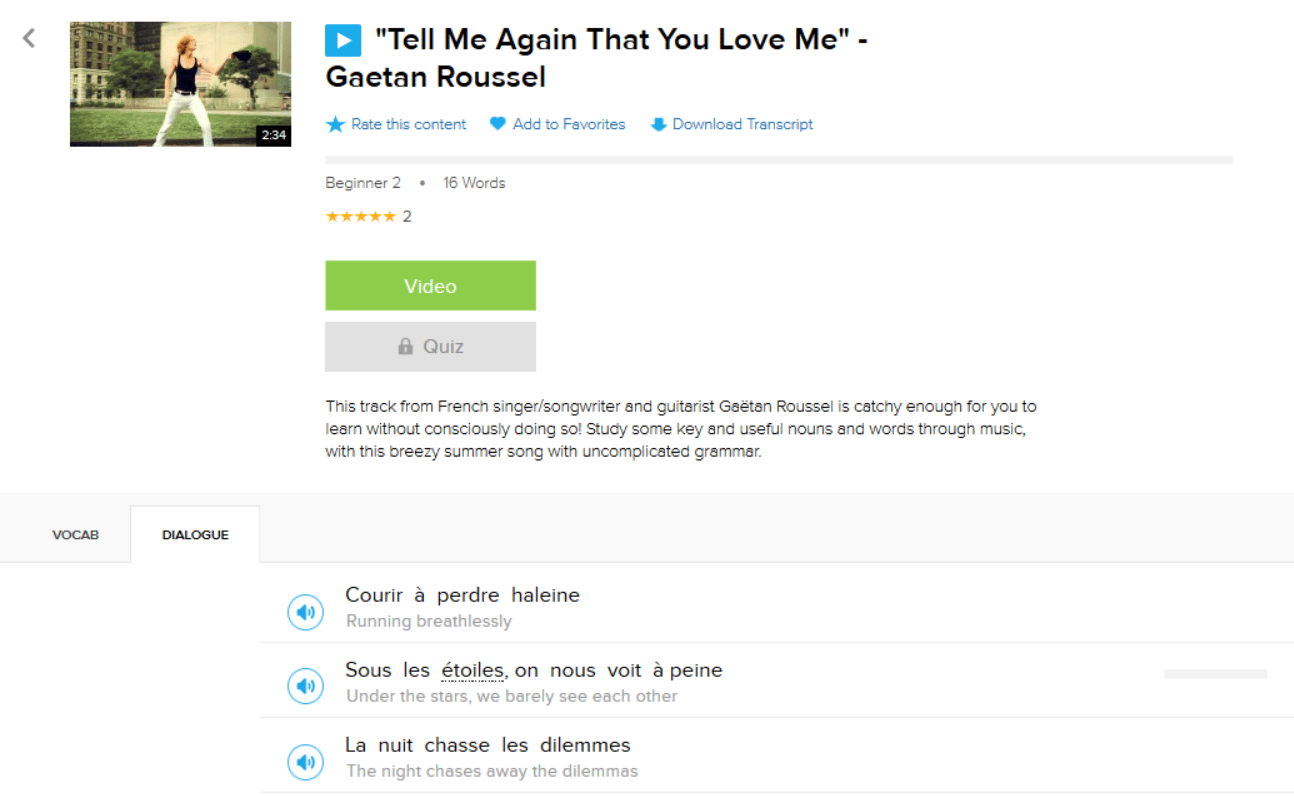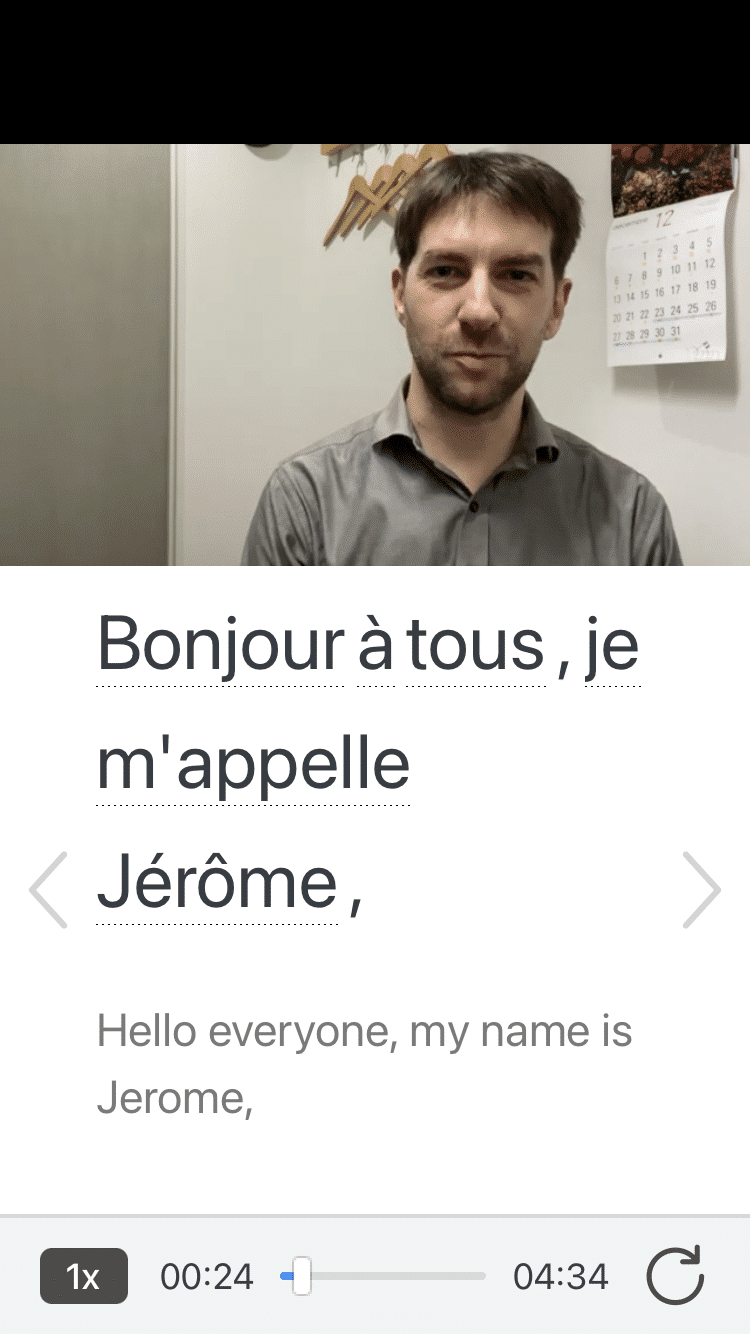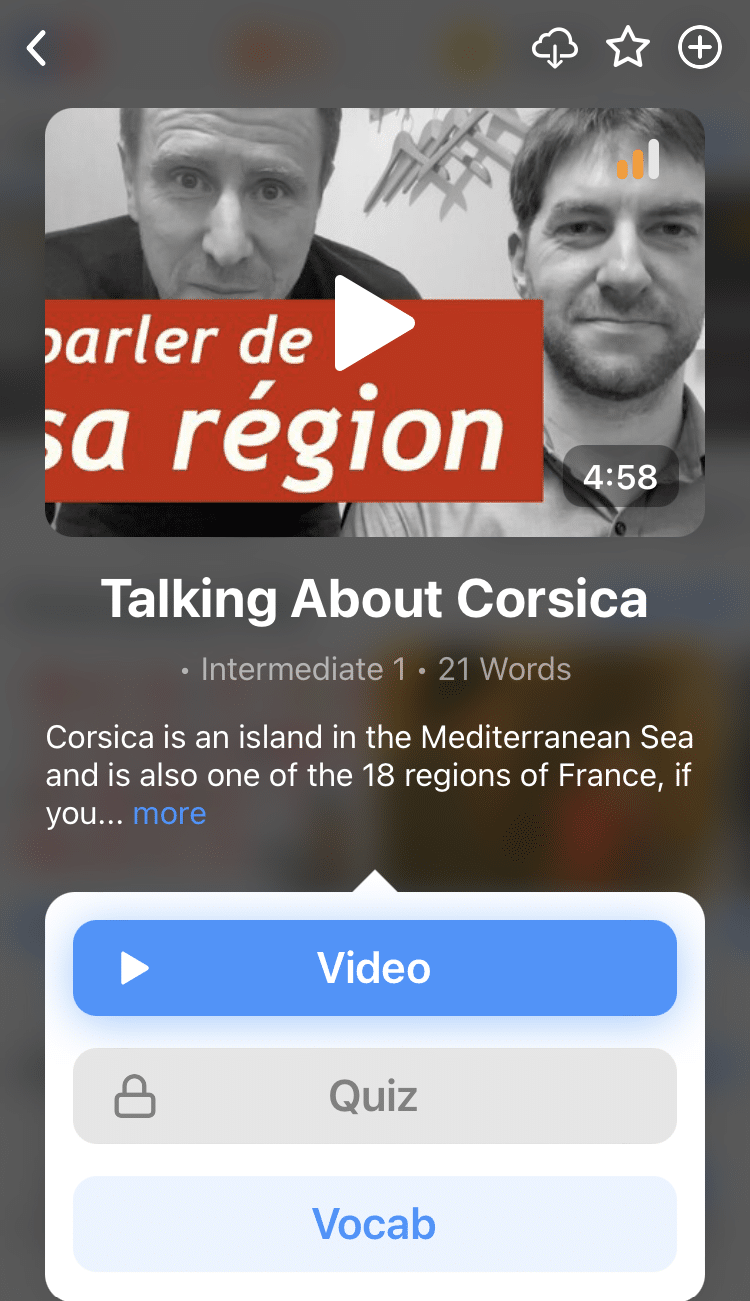The French Passé Composé Guide: How to Form It and When to Use It

When you start learning a language, you often begin with the present tense.
But if you are ready to take the next step and start speaking, reading, listening to and writing about the past in French, you need to learn the passé composé.
The passé composé is the French perfect tense and the most common past tense form in spoken French.
We’ll walk you through all aspects of the passé composé: how to practice it, when to use it, how to form it, how to put it into negative statements and how to employ it in questions.
Download: This blog post is available as a convenient and portable PDF that you can take anywhere. Click here to get a copy. (Download)
When to Use the French Passé Composé
The passé composé is a verb tense used to talk about the past, but it’s not the only past tense in French.
For instance, there’s the imparfait (imperfect), which describes repeated or habitual actions, as well as the passé simple (simple past), which is employed in literature.
So what exactly does the passé composé do?
The passé composé is the primary way to discuss the past in spoken French.
Learning this tense is key to sharpening your conversational skills.
Take the following dialogue as an example:
A: Qu’est-ce que tu as fait aujourd’hui ? (What did you do today?)
B: Je me suis levée, j’ai bu un café, puis je suis allée en cours. (I got up, I drank coffee, then I went to class.)
A: Et dans l’après-midi ? (And in the afternoon?)
B: J’ai regardé un film avec une amie. (I watched a movie with a friend.)
A: Êtes-vous sorties au cinéma ? (Did you go out to the theater?)
B: Non, nous l’avons vu sur Netflix. (No, we saw it on Netflix.)
This dialogue gives you a first taste of the tense and shows its practicality. It’s the form you’d use to recount your day, describe your recent vacation or talk about the news.
The passé composé isn’t just for talking about the recent past! You’ll use this same verb form to talk about recent events as well as ancient history:
Recent past: Il a fait des achats hier. (He went shopping yesterday.)
Distant past: Les Égyptiens ont construit les Pyramides. (The Egyptians built the pyramids.)
Two vastly different time-tables, same grammatical construction. The key is that the passé composé is used to talk about completed actions that took place at one time.
The French Passé Composé Definition
You might be wondering what passé composé itself means.
If you’re really into grammar, it corresponds to the “perfect tense,” but the phrase passé composé literally means “compound past.” This makes sense because, as you may have noticed in the examples, this verb form has two parts:
Verbe auxiliare (auxiliary verb) + participe passé (past participle) = passé composé (perfect tense)
Don’t worry. We’ll dive into each part and help you put it together.
Verbe Auxiliare (Auxiliary Verb)
The auxiliary verb is the first part of the passé composé, meaning it comes after the subject and before the past participle.
The auxiliary verb is always either avoir or être conjugated the same way it would normally be with the subject.
| Avoir | to have |
|---|---|
| J'ai eu | I had |
| Tu as eu | you had |
| Il a eu / Elle a au | he/she had |
| Nous avons eu | we had |
| Vous avez eu | you had (formal, plural) |
| Ils ont eu / Elles ont eu | they had (masculine/feminine) |
| Être | To be |
|---|---|
| J'ai été | I was |
| Tu as été | you were |
| Il été / Elle été | he/she was |
| Nous avons été | we were |
| Vous avez été | you were (formal, plural) |
| Ils été / Elles été | they were (masculine/feminine) |
Here’s a close-up of the passé composé in-action:
Subject + auxiliary verb + past participle
Il + a + cuisiné.
The subject is il (he), and the auxiliary verb is avoir, which becomes a when conjugated with il.
Finally, the past participle is cuisiné, from the infinitive cuisiner (to cook).
The full sentence is:
Il a cuisiné. (He cooked.)
That’s how the passé composé is formed! It’s definitely not the most difficult grammatical construction out there.
But yes, there’s more.
Now, we’ll look in detail at when to use each of the auxiliary verbs.
Passé Composé with Avoir
The vast majority of French verbs form the passé composé with avoir.
This means that you’ll conjugate avoir the way you normally would and then add the past participle, as in the previous example.
Let’s do one more together:
Subject + avoir + past participle [+ additional details]
Je + ai + acheté + des fleurs hier.
J’ai acheté des fleurs hier. (I bought flowers yesterday.)
Avoir conjugated in the first person singular is ai, and acheté is the past participle of acheter (to buy).
But does it agree?
Agree grammatically, that is. Remember how adjectives need to agree in gender and number with the words they describe?
For example, compare un grand lit (a big bed), une grande table (a big table), les grands lits (the big beds) and les grandes tables (the big tables).
Fortunately, when using avoir in the passé composé, agreement is generally not required.
There is a special case where agreement is necessary, but it’s quite rare, so don’t lose sleep over it.
When a direct object and que (that) comes before the passé composé phrase, the past participle must agree with that object, even if the auxiliary verb is avoir.
It would look like this:
Les fleurs que j’ai achetées sont belles. (The flowers that I bought are beautiful.)
In this case, les fleurs are the direct object (they are what was bought), and they come before the passé composé verbs.
Therefore, agreement is necessary. Since les fleurs is feminine plural, we add -es to the regular past participle, acheté.
Note that sont (are) is the second action in the sentence and is not part of the passé composé.
Again, this is a complex, uncommon construction, so in most cases, you don’t need to worry about agreement with avoir.
Passé Composé with Être
There are two types of verbs that take être in the passé composé.
The first group is intransitive verbs, meaning they don’t take a direct object. These verbs, such as venir (to come), often describe movement.
A common strategy to remember these verbs is the “DR. and MRS. VANDERTRAMP” mnemonic, in which each letter stands for a verb:
- Devenir (to become)
This -ir verb has an irregular past participle: devenu.
- Revenir (to come back)
Following the pattern of devenir, this verb’s past participle is revenu.
- Monter (to go up)
- Retourner (to return)
- Sortir (to go out)
- Venir (to come)
This verb’s past participle is venu.
- Aller (to go)
- Naître (to be born)
The irregular past participle of naître is né.
- Descendre (to go down)
- Entrer (to enter)
- Rentrer (to go home, come back)
- Tomber (to fall)
- Rester (to stay)
- Arriver (to arrive)
- Mourir (to die)
This verb’s irregular past participle is mort.
- Partir (to leave)
The second group of verbs that take être is reflexive verbs. These are actions that, either literally or figuratively, reflect back onto the subject.
Such verbs are always accompanied by a reflexive pronoun (me, te, se, nous or vous).
Some common reflexive verbs include se brosser (to brush), se souvenir (to remember) and se laver (to wash).
In the passé composé, these verbs take être and follow this pattern:
Subject + reflexive pronoun + être + past participle [+ additional details]
Il + se + est + brossé + les dents.
Il s’est brossé les dents. (He brushed his teeth.)
Se is the third person reflexive verb, est is être conjugated for the subject il and the past participle of brosser is brossé.
Remember our discussion about agreement?
When être is the auxiliary verb, the past participle always agrees in gender and number with the subject.
This means adding -e for a subject that’s feminine, -s for a masculine plural subject and -es for a feminine plural subject.
Here’s an example:
Elle est allée au magasin. (She went to the store.)
The past participle allé becomes allée to reflect the feminine subject, elle (she).
Forming the Participe Passé (Past Participle)
The participe passé (past participle) is the second piece of the passé composé, following the verbe auxiliare (auxiliary verb).
The past participle is employed in other grammatical constructions (not just with the passé composé), but there’s a good chance this is the first time you’re encountering it.
To form the past participle, you’ll simply take the verb’s infinitive form (the basic, unconjugated form you’ll see in dictionaries and vocabulary lists) and change its ending.
What that looks like depends on which verb group is involved:
| The group of verbs | Verb's infinitive form | Suffix | Verb in the past particple |
|---|---|---|---|
| verbs ending in -er | parler (to speak) | -er suffix becomes -é | parlé |
| verbs ending in -ir | partir (to leave) | -ir suffix becomes -i | parti |
| verbs ending in -re or -oir | vouloir (to want) | -re or -oir become -u | voulu |
These three rules cover most French verbs.
However, you need to look out for irregular verbs.
Here are some of the most important irregular past participle forms.
| Irregular verbs | The past participle form |
|---|---|
| avoir (to have) | eu |
| étre (to be) | été |
| prendre (to take) | pris |
| comprendre (to understand) | compris |
| couvrir (to cover) | couvert |
| offrir (to offer) | offert |
| recevoir (to receive) | reçu |
Memorizing the irregular past participles will make using the passé composé much easier.
Passé Composé in Negative Statements
Hopefully, you’re never accused of a crime in France, but knowing how to explain that you did not do a particular thing is still helpful.
You may recall that the normal negative construction is:
Subject + ne + verb + pas [+ additional information}
Je + ne + joue + pas + aux échecs.
Je ne joue pas aux échecs. (I don’t play chess.)
But what does it look like with the passé composé, when there are at least two verbs and (for reflexive verbs) a reflexive pronoun?
Simply put the auxiliary verb between ne and pas.
The pattern looks like this:
Subject + ne + auxiliary verb + pas + past participle [+ additional information]
Il + ne + a + pas + répondu + à ma question.
Il n‘a pas répondu à ma question. (He didn’t answer my question.)
Other negative statements such as ne… jamais (never) follow this same pattern:
Elle n‘a jamais vu cette pièce. (She never saw this play.)
Nous ne sommes jamais allés à l’université. (We never went to university.)
For reflexive verbs, the reflexive pronoun goes after ne and before the auxiliary verb:
Subject + ne + reflexive pronoun + auxiliary verb + pas + past participle [+ additional information]
Je + ne + me + suis + pas + brossé + les dents.
Je ne me suis pas brossé les dents. (I didn’t brush my teeth.)
Passé Composé in Questions
You may remember that there are three ways to form a question in French. We’ll review each one with examples using the passé composé.
For yes or no questions, it’s typical to just say a statement with rising intonation to indicate that you expect confirmation. We do the same thing in English, and the word order is exactly the same as in a declarative sentence:
Vous avez lu ce livre ? (You’ve read this book?)
A second method is to employ the phrase est-ce que (literally, “is it that”). In this case, the word order is still the same; you just put est-ce que at the beginning:
Est-ce que vous avez lu ce livre ? (Have you read this book?)
Où est-ce que tu es née ? (Where were you born?)
Finally, you can ask a question through inversion. This means that the verb and subject switch places and are joined with a hyphen.
For the passé composé, the auxiliary verb comes first, followed by the subject and then the past participle:
Avez-vous lu ce livre ? (Have you read this book?)
Où es-tu née ? (Where were you born?)
Ready for a challenge?
How would one form a negative question with the passé composé?
You’d place ne before the auxiliary verb and subject, followed by pas:
N’avez-vous pas lu ce livre ? (Haven’t you read this book?)
You can find all these and more in the FluentU video library:
FluentU takes authentic videos—like music videos, movie trailers, news and inspiring talks—and turns them into personalized language learning lessons.
You can try FluentU for free for 2 weeks. Check out the website or download the iOS app or Android app.
P.S. Click here to take advantage of our current sale! (Expires at the end of this month.)
Where to Practice the Passé Composé
Learning the passé composé can be confusing, but practice will make all the grammatical pieces fall into place much more easily.
Once you’re ready to tackle the passé composé yourself, try out these resources to put your skills to the test!
- Tex’s French Grammar. This handy site is affiliated with the University of Texas and contains several grammar help pages hosted by your friendly neighborhood, French-speaking armadillo, Tex. These pages review the formation of the passé composé and include a quiz for both verbs that take avoir and verbs that take être.
- Lingolia. Here, you can take a three-part quiz that gets progressively more challenging. In the beginning, you just choose être or avoir from a drop-down menu. You’re asked to write out the full passé composé form in part two and finally, you’ll complete each sentence with an irregular past participle form in part three.
- ProProfs. This quiz simply shows you an irregular verb, and it’s up to you to type in the correct past participle form.
- YouTube. Not in the mood for a quiz? Here’s a catchy Lego-themed video to help you remember the verbs that take être in the passé composé.
Here’s your guide to understanding the passé composé that can vastly expand your language abilities.
You can now study history in French, learn from others’ experiences and reflect on your own past.
Now, all that’s left to do is practice and bask in your new skills.
Download: This blog post is available as a convenient and portable PDF that you can take anywhere. Click here to get a copy. (Download)
And one more thing...
If you like learning French on your own time and from the comfort of your smart device, then I'd be remiss to not tell you about FluentU.
FluentU has a wide variety of great content, like interviews, documentary excerpts and web series, as you can see here:

FluentU brings native French videos with reach. With interactive captions, you can tap on any word to see an image, definition and useful examples.

For example, if you tap on the word "crois," you'll see this:

Practice and reinforce all the vocabulary you've learned in a given video with learn mode. Swipe left or right to see more examples for the word you’re learning, and play the mini-games found in our dynamic flashcards, like "fill in the blank."

All throughout, FluentU tracks the vocabulary that you’re learning and uses this information to give you a totally personalized experience. It gives you extra practice with difficult words—and reminds you when it’s time to review what you’ve learned.
Start using the FluentU website on your computer or tablet or, better yet, download the FluentU app from the iTunes or Google Play store. Click here to take advantage of our current sale! (Expires at the end of this month.)










